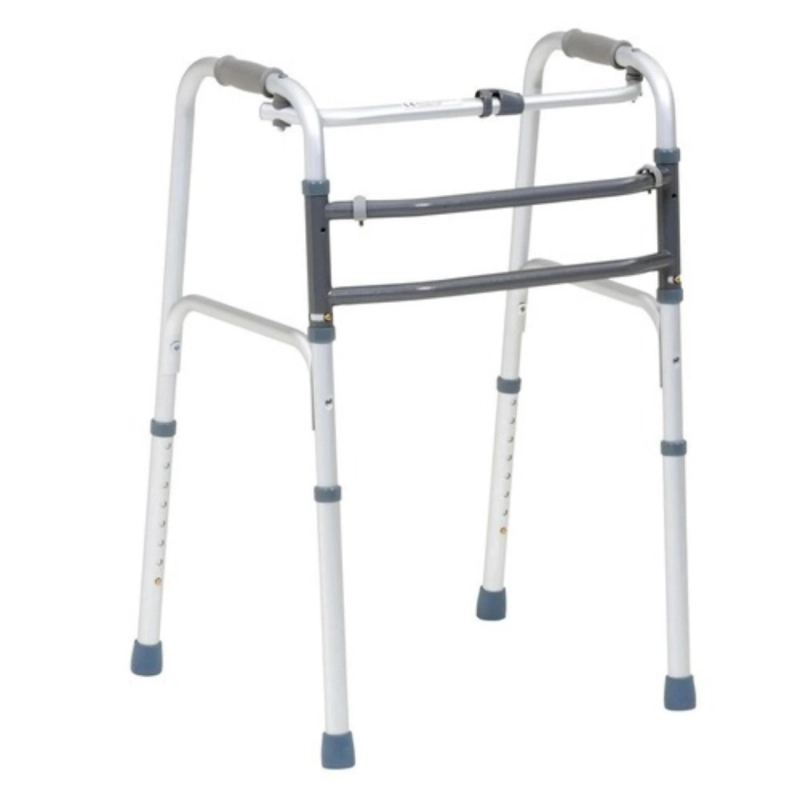From sprightly seniors to those facing temporary mobility issues, a walker can be a life-changing mobility aid. Making the decision to use a walker is a significant step toward independence and safety, but the sheer variety of models available can be overwhelming. What type of walkers for the disabled is best for different disabilities, what should you consider before purchasing, and how can you maintain your walker to keep it functioning optimally? In this comprehensive guide, we'll address these questions and more, catering specifically to individuals with disabilities and the unique needs they present.
Understanding the Needs of the Disabled
For individuals with disabilities, a walker is more than a piece of equipment; it's an extension of their body, providing much-needed support and freedom. Disability can range from physical to neurological or sensory types, often affecting mobility to varying degrees. Walkers come in different styles to meet these needs, providing support to stand or walk for people who might have difficulty doing so independently.
The Spectrum of Disabilities
There are different types and levels of disabilities, each with its own set of challenges and requirements for assistance. What might be an ideal walker for someone with a temporary injury might not suit those with more permanent, long-term disabilities. Understanding the spectrum of disabilities helps in customizing the walker experience to the individual.
Finding the Right Walker for You
Selecting a walker isn't a one-size-fits-all decision. There are various factors to consider, from the individual's height to the amount of weight the walker can support. Here's how to choose the best walker for your unique set of needs.
Height and Weight Considerations
Walkers should be adjusted to the correct height to avoid bending or stooping, which can lead to further injury. For heavy-set individuals, it's crucial to select a walker with a wider frame and a greater weight capacity.
Maneuverability and Storage
If the individual will be using the walker indoors or in tight spaces, a narrow model with swivel wheels might be the best option. Consider storage options as well; collapsible or foldable walkers are easy to stow when not in use.
Special Features
Some walkers come with features like hand brakes, padded seats, or integrated storage. Think about what additional functions or features might enhance your experience and promote safety.
Maintaining Your Walker for Longevity
A walker is an investment in safety and mobility, so it's important to keep it in good working condition. Regular maintenance ensures that your walker is as reliable as the day you bought it.
Cleaning and Disinfecting
Given that a walker comes in constant contact with the floor, which can be a hotspot for germs, regular cleaning is essential. Follow the manufacturer's guidelines to prevent deterioration due to harsh cleaning products.
Inspection
Periodically inspect the walker for signs of wear or damage. Pay attention to the rubber tips, wheels, and any moving parts. If something seems amiss, address it immediately to avoid accidents or injuries.
Use Suggested Accessories
Many walkers can be customized with accessories like trays, baskets, and cup holders. Using these accessories can help protect the finish of your walker and improve its functionality.
By understanding the various walkers for the disabled options and personalizing the choice based on specific disability needs, you can significantly improve the mobility and quality of life for the disabled. Regular maintenance will ensure the walker continues to provide support and help prevent complications in the long run. Top Medical Mobility, as one of the premier providers of mobility aids, promises to offer a wide range of high-quality walkers to meet the unique needs of each individual. Their commitment to excellence in customer service and product quality makes them a go-to resource for anyone looking to enhance their mobility.


